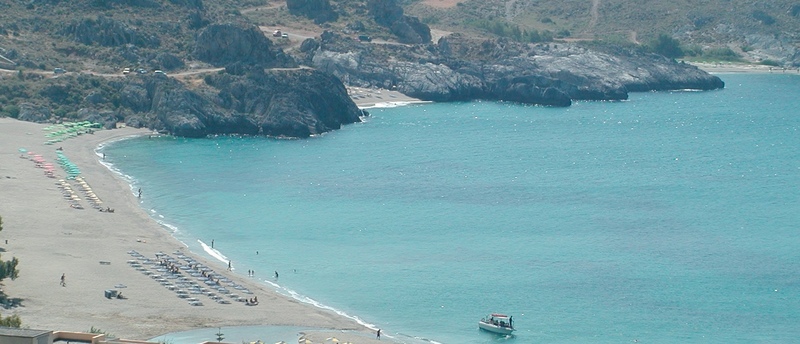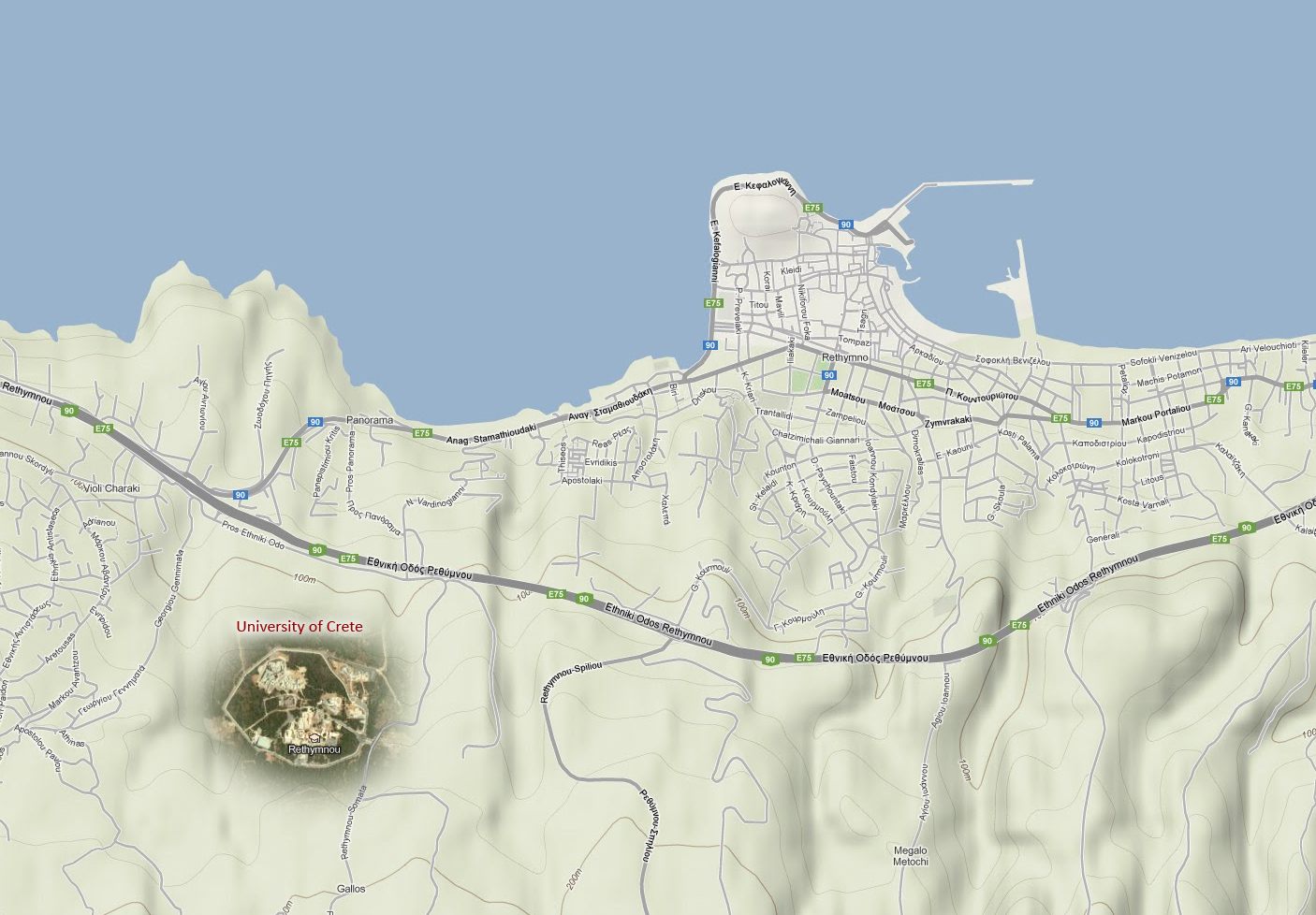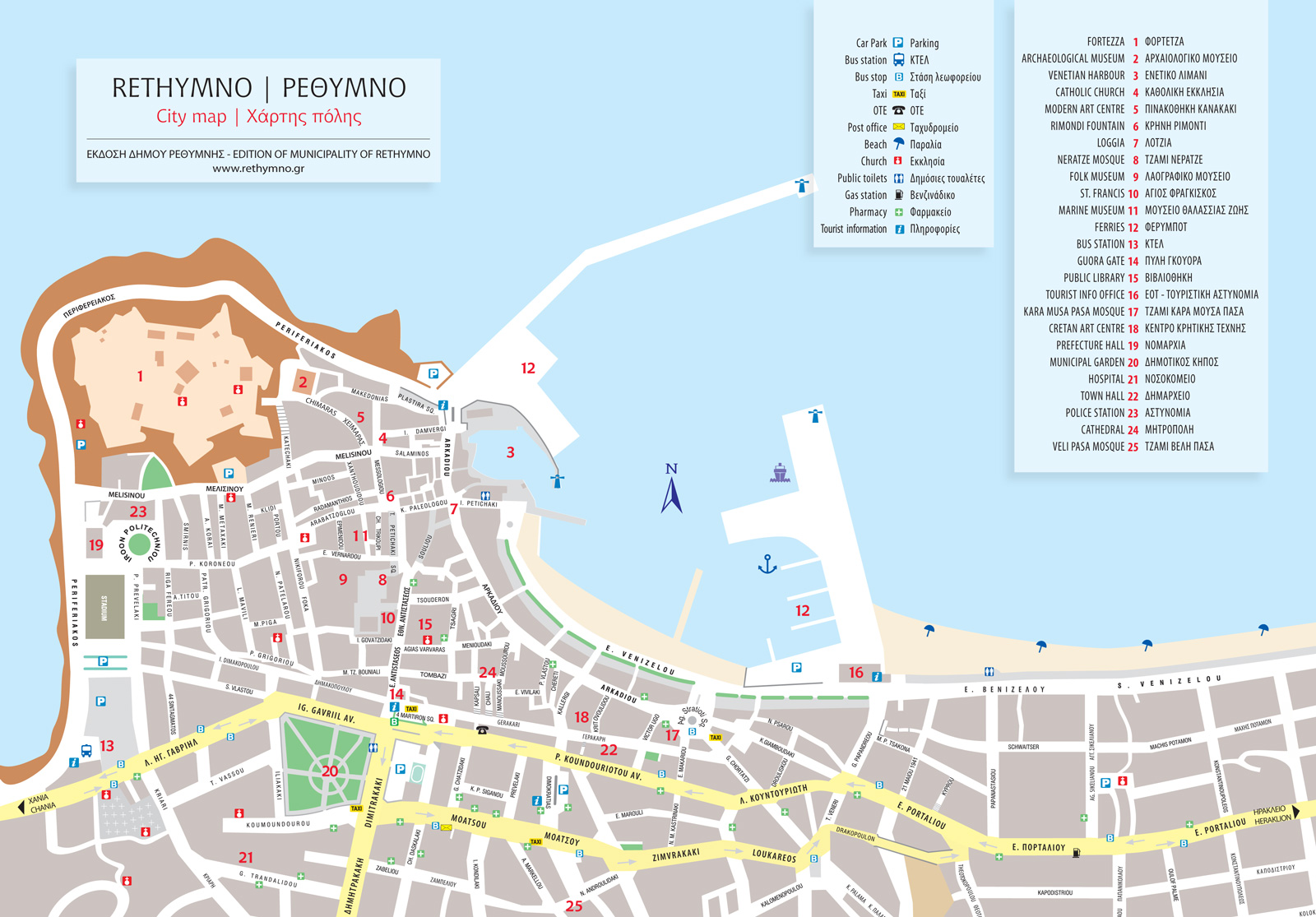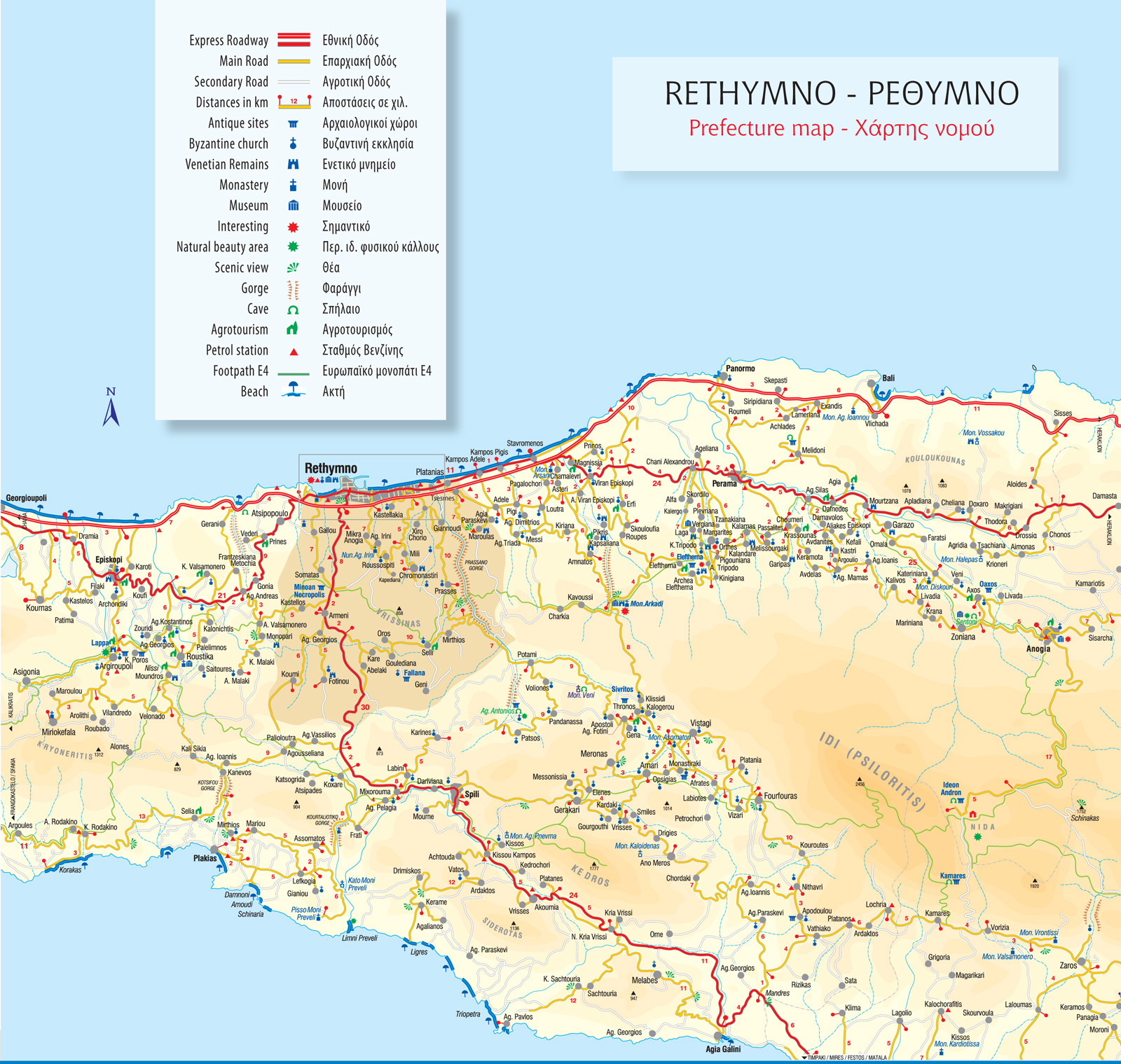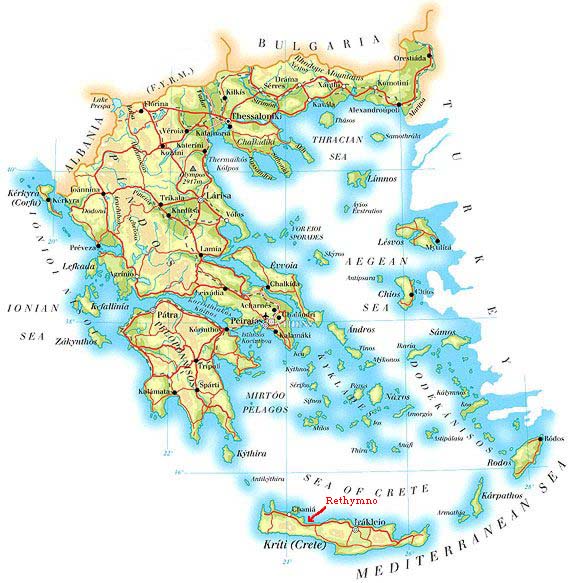Travel Information
Practical Information

Details about Crete and Greece in general can be found on the website www.vacation.gr and for Rethymno at http://www.rethymno.gr/en/city. Also, general information about the University of Crete at Rethymno Campus are available. The Campus is located near GALLOS village (5 kilometres from Rethymno).
The Town of Rethymno

A beautiful, wide and endless sandy beach, picturesque little streets with old Venetian and Turkish houses, and the Venetian port and fortress make Rethymno one of the most attractive places for holidays in Greece. Rethymno combines the sea with the country, and is surrounded by mountains in the south. Its location, in about the middle of the northern coast of Crete, makes it a convenient starting point from which to visit most of the island’s beauties. Within thirty minutes to an hour, the traveller can visit lakes, archaeological sites, historic monasteries, charming villages, or the wild unspoiled beauty of the south, by public bus, organised tour, or car.
Population: About 30,000 inhabitants. Rethymno is the third largest town in Crete, after Heraklion and Chania.
Getting there and getting around: Taxis charge reasonably and can be found at their ranks, stopped on the street, or called by phone (+30 28310, 24000, 25000, 22316). They have meters, but prices are fixed for the most common of the destinations and should be checked before setting off. There are many agencies that rent cars, motorcycles, and bicycles.
Distances: From Heraklion 78km, from Chania 55km, from Agia Galini 59km, from Plakias 41km.
Tourist information: Information, maps and travel guides from the Tourist Support Office in Rethymno (Tel: +30 28310 29148).
Telephone: The town code is +30 28310. In Greece the telephone office (O.T.E., 28 P. Kountouriotiou Ave, daily 8 am – 10 pm) is separate from the post office. Phone calls from public phone stands or OTE‘s office, can be made only with phone cards (Tilekarta, € 3). Prepaid phone cards (Teledome, Vivodi, Smartalk, Talk Talk, Hronokarta, with prices from € 3 to € 10) can be bought at kiosks or mini markets, charge less and can be used from any fixed public or private tone phone. Phoning home is cheaper from 10 pm- 6 am on the weekdays and from 3 pm at Saturday till 6 am Monday (Greek time). Transferred calls can be operated through the operator, by dialling 161. Telegrams can be sent from OTE‘s office and faxes from OTE, travel agencies and hotels. Emergency: 100, Tourist Police: +30 28310 28156, Police department: +30 28310, 25247, First aid: 166.

Post office (ELTA): Two offices, at 21 Moatsou St. (main office) and at the beginning of Sof. Venizelou St. (department). (Mon – Sat 8 am – 8 pm). Post code: 741 00 Rethymno. Letter boxes are painted yellow and can be found in the most central locations. Stamps can be bought from the post offices or from kiosks and shops selling postcards and foreign newspapers, with a small premium being charged.
Medical treatment: There is a public hospital at Trandalidou St., near the south side of The Municipal Garden (tel. +30 29310 27491) and many private medical centers. There is always a pharmacy open from 8 am to 8 pm and another one from 8 pm to 8 am. Lists of these pharmacies, for each day, can be found on the window of any pharmacy.
Weather: Rethymno has a mild climate: in summer it is cooler than mainland Greece (average temperature is 26-30°C) and in winter much warmer (14-18°C). The maximum sea temperature in summer is 24°C and in winter 16°C.
When to visit: Mainly depends on the time that each person’s schedule permits, but many people can choose the period they prefer to take their holiday. Life and atmosphere in the town of Rethymno and on the whole island change with the season. The tourist season starts in mid-March and gets busier in April. The weather is warm enough, but there are not so many activities yet and the sea temperature is not so high. This is low season and accommodation prices are low. May, June and October are the middle season, the start and the end of summer. Many people prefer this period because the good weather permits them to do and see many things, it is not too busy, not too hot – except in June – the sea is warm and the nature takes on wonderful colours and smells. The period from July to the end of September is the high season, when the most people take their holiday and the town gets very busy. Availability in hotels is limited and prices are higher (prices in restaurants, museums and sights are the same during the whole year). This is the period with the most activities and the best weather. Mid-November till mid-March is the off-season and life slows down. Charter flights stop operating, the sea gets colder, rain comes, many shops – those working with tourism only – close, as do most of the hotels and sights.
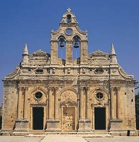
History: The first signs of human life come from the Neolithic years, but the first settlement appeared during the last years of the Minoan civilization (1350-1100 BC). The ancient town, called Rithymna, developed during the classical years (470-323 BC) and after lost its prosperity. In 1204 AD Crete came under Venetian domination. The island was very important to Venice, due to its geographical location, in their merchant activity with the Peloponnesus, the islands of the Aegean Sea, the Arabic countries and India. During this period, the fortress and the defending walls were built to protect the town from the Turkish and Algerian pirates. There was economic growth and in the last years of the Venetian occupation many people could study at Italian universities, which led to the development of the arts – literature, theater, painting, architecture. The Cretan Renaissance flowered at this time and in 1561, the ViVi Academy, the first cultural corporation in Greece after the fall of the Byzantine Empire, was founded. In 1646, Rethymno was conquered by the Turks, the economy became agricultural and education ceased. After many revolutions, the town was occupied by the “Great Powers” and Rethymno was taken by Russia in 1898. Crete united with the rest of Greece in 1913 and from 1941-1944, the island was under German occupation. In the last 25 years, Rethymno has experienced significant growth in its economy through the development of tourism, and in culture through the establishment of the university.
Summer Activities
Excursions

- Heraklion - Archaeological Museum - Knossos
- Phaistos - Gortyn - Matala
- Falasarna - Elafonissi - Paliochora
- Daily cruises to Balos
- Daily cruises to Santorini
- Plakias - Preveli - Agia Galini
- Samaria Gorge
- Sitia - Vai Palm Forest
Activities
- Diving in Crete:
Discover the fascinating underwater world of Crete and get the feeling of flying in a weightless environment with all the colorful marine life around you. A theory session and preparation before you dive will give you the full picture of what to expect. Diving excursions at the north and south coast; coastal, boat and night diving. Safe diving according to PADI regulations for beginners and experienced divers. Boat dive trips are in progress throughout the entire season, with experienced dive guides. Explore in small groups with individual treatment the fascinating Cretan underwater world with its rich flora, steep cliffs, caves and variety of marine life, as e.g. octopus, crabs, starfish, lobster and countless fish species. No other place in the Mediterranean sea gathers so many diverse and rich scenes of underwater conditions and marine life.
- Bike Tours
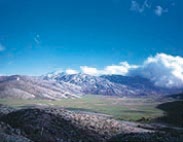
(IDA Mountain - Anogia) - Jeep Safari
For more information please contact our ASSEE Secretary or directly:
"CRETA CONNECTION" TRAVEL AGENCYe-mail: creta-connection@ret.forthnet.gr
Tel: +30 2831 0 24977, 54258
Fax: +30 2831 0 25663
Transportation
There are several ways to reach Rethymno:
- By air travel to Athens, and a connecting flight to the Cretan cities of either Chania or Heraklion, and then bus or taxi travel to Rethymno (approximately 1 hour).
- By air travel from a European city directly to the Cretan cities of either Chania or Heraklion, and then bus or taxi travel to Rethymno (approximately 1 hour).
- By air travel to Athens, and ferryboat from Athens (the port of Piraeus) to Heraklion or Chania and then bus or taxi travel to Rethymno.
By plane
Information regarding flights and time schedules can be located in official sites of OLYMPIC Airways, AEGEAN Airlines, Sky Express and RyanAir. Travelers can reach Rethymno by air travel from Athens via Chania or Heraklion. Flights between Athens and either of these cities take slightly less than one hour. Also RyanAir has direct flights to Chania from many European cities.
Several domestic airlines serve the Athens-Chania-Athens and Athens-Heraklion-Athens routes. The airlines include: Aegean Airlines (A3), Olympic Airlines (OA).
Land travel between Chania airport and Rethymno
Option 1: Transfer by taxi costs between €75 and €90. However, this cost can be divided if more than one passenger shares the taxi (up to 4).
Option 2: After arriving at the Chania airport, travellers can take preferably a taxi or city bus to the intercity bus terminal (KTEL) in the city of Chania, and from there intercity buses leave for the Rethymno bus terminal approximately every hour between 5:00 and 20:00.
Option 3: Certain flights of Olympic Airways have a connecting bus from the Chania airport to the center of the city of Rethymno.
Land travel between Heraklion airport and Rethymno
Option 1: At Heraklion airport you can also find taxis which can drive you directly to your hotels in Rethymno for a price of approximately €85-€100. It is possible for a group of 3 or 4 persons to hire a TAXI and share the expenses.
Option 2: After arriving at the Heraklion airport, travelers can take preferably a taxi or a city bus to the intercity bus terminal (KTEL) in the city of Heraklion (in the port area), and from there intercity buses leave for the Rethymno bus terminal approximately every hour between 06:00 and 20:00. .
By boat
Ferryboat connection between Athens and Crete is available through Chania, Souda Bay (ANEK LINES, Blue Star Ferries ) or Heraklion (MINOAN LINES, ANEK LINES, Blue Star Ferries). After arrival at the port of Souda (Chania) or Heraklion, travelers would choose between the bus/taxi options listed above.
By bus “Greek Road Transport Company” (KTEL)
From Souda Bay or from Heraklion Port KTEL buses drive you to the Rethymno bus terminal.
KTEL Buses depart from Chania at 05:30 till 20:30 every hour and from Heraklion at 06:30 till 20:30 every hour.
Then you can find a Taxi, which can drive you to your hotel at a price of €5-€8.
Getting to Campus

From Chania International Airport I. Daskalogiannis
A taxi ride directly to Rethymno campus in Galos takes an expected 75 to 80 minutes and costs about €90.
The cheapest way to travel from the airport is to use the Public Bus Services. The bus routes from the Airport to Chania Bus Station are formed according to the flights, every half an hour. The route duration is approximately 30 minutes and the ticket price is €2,50.
The bus routes from Chania Bus Station to Rethymno Bus Station are scheduled every hour, the route duration is approximately 1 hour and the ticket price is €6,70. For more information about the urban and interurban bus routes from Chania please visit the website of Public Bus Service.
From Heraklion International Airport N. Kazantzakis
A taxi ride directly to Rethymno campus in Galos takes an expected 70 to 75 minutes and costs about €85.
In order to travel from Heraklion Airport to Heraklion Bus Station you can get buses number 1, 6, 8, 10, 12, 17 or 31, every ten minutes, just outside the airport. The route duration is about 20 minutes and the ticket price is €1,20.
The bus routes from Heraklion Bus Station to Rethymno Bus Station are scheduled every hour, the route duration is approximately 1 hour and a half and the ticket price is €8,30. For more information about the interurban bus routes from Heraklion please visit the website of Public Bus Service.
From Rethymno Bus Station to University Campus
The buses run every hour. The ticket price is 1,30€ and the bus route takes 10-15 minutes to the campus. Once you arrive at campus entrance, it is a 5 minutes walking distance to reach students halls. Student halls are located on the right hand side. Please check the second map available on Useful Maps to help you navigate inside campus. Alternatively you can get a taxi right outside the Bus Station with a cost approximately of €10.


